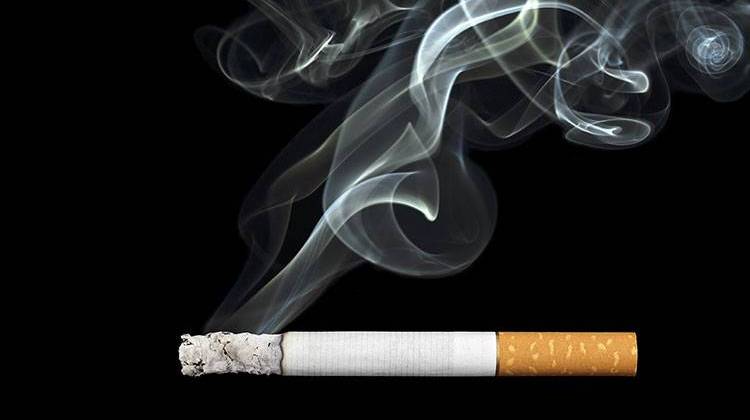
State legislators stuck a $2-per-pack hike into the two-year budget, House Enrolled Act 1001. They also proportionally increased taxes on electronic cigarettes and other tobacco products.
Stock photoCigarette consumption in Indiana dropped 40% during the first three months of a long-sought tax increase, according to the Indiana Department of Health. Enrollment in the agency’s smoking cessation program jumped almost 40% over that time.
“(Cigarette) use impacts, really, every aspect of health,” said Miranda Spitznagle, director of IDOH’s Division of Tobacco Prevention and Cessation. But it’s a risk factor that is “fully preventable.”
Using taxes to raise the price of tobacco helps current users quit and may dissuade others from starting, Spitznagle said.
“It’s a huge policy factor for public health,” she added.
State legislators stuck a $2-per-pack hike into the two-year budget, House Enrolled Act 1001. They also proportionally increased taxes on electronic cigarettes and other tobacco products.
Spitznagle said that across-the-board approach prevents users from switching products instead of quitting or pulling back.
“This year, Indiana lawmakers stood up to Big Tobacco” by boosting the taxes, said Allie Kast Gregg, government relations director for the American Cancer Society Cancer Action Network.
But public health wasn’t the only motivation.
The Indiana Senate resisted for years, but in the wake of a dismal budget forecast, agreed to include the hikes in the budget’s final draft.
The boost to a nearly $3-a-pack tax on cigarettes went into effect July 1. And it is already paying off.
Indiana has collected $188 million in cigarette taxes from July through October, according to the State Budget Agency’s latest monthly revenue report. That’s almost three times the $68 million earned over that time period last year.
IDOH used the first three months of data — July, September and October — to calculate a 40% drop in consumption.
Meanwhile, Hoosiers are flocking to the state’s cessation help program, Quit Now Indiana.
“The month of July specifically, we doubled our enrollments,” Spitznagle said, compared to that month last year.
Participation was up 38% over those first three months, rising from 620 to 1,241 people.
Quit Now Indiana is up to eight times more effective than solo efforts, Spitznagle noted. Going it alone has a single-digit success rate, while the state program has a 32% quit rate.
“What Quit Now Indiana offers is multiple touch points with a trained quit coach who knows how to talk through and make a quit plan … that understands nicotine addiction,” she said.
The program can also provide two weeks of nicotine patches or gum and helps enrollees see if their employers or health plans can offer further medical support.
The American Cancer Society also runs an email-based Empowered to Quit program.
Nearly 15% of adults in Indiana smoke, according to U.S. Centers for Disease Control and Prevention data from 2023.
Thousands of Hoosier deaths annually are attributable to smoking. An oft-cited CDC estimate from 2014 places the death toll at 11,000 a year.
Spitznagle said that for every one death, however, 30 people live with chronic health conditions linked to their smoking.
 DONATE
DONATE







 Support WFYI. We can't do it without you.
Support WFYI. We can't do it without you.